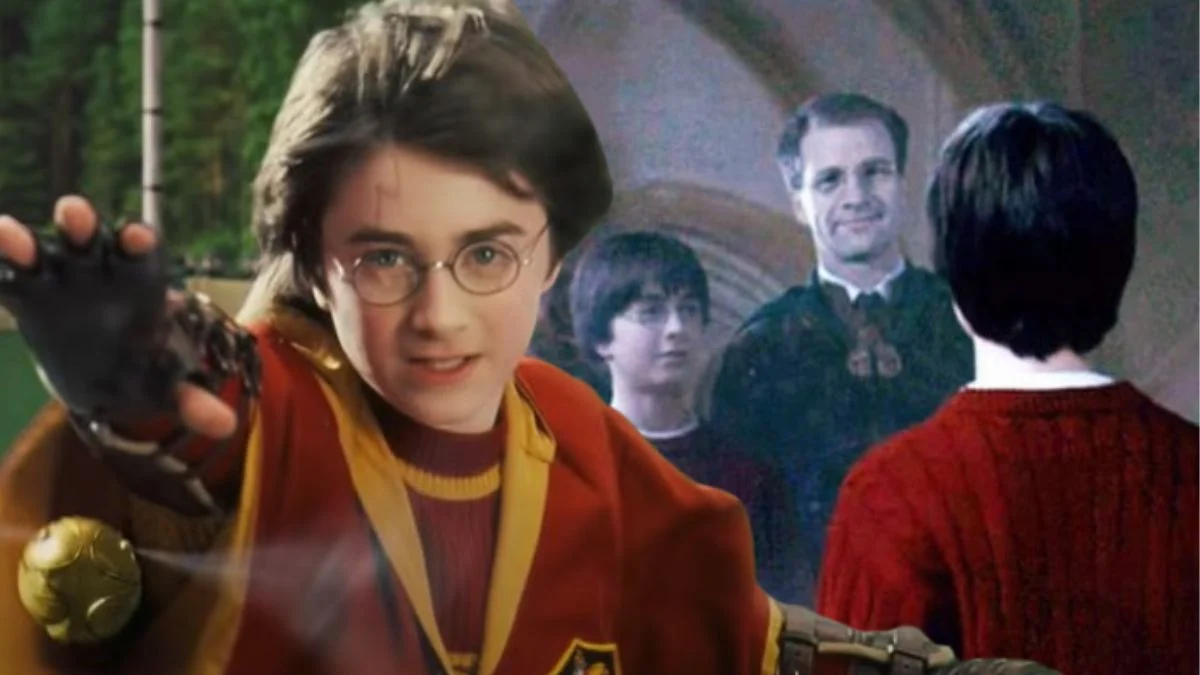
Many fans recall their initial experience with the wizarding world as starting with seeing Hogwarts, hearing the iconic theme music, and witnessing the arrival of a letter to the cupboard under the stairs. However, they may not be aware of the ingenious techniques, unconventional choices, and problem-solving that made those memorable scenes possible. It was a complex process bringing those moments to life.
The production team overcame challenges with ingenuity, from eleventh-hour adjustments to a memorable quote and elaborate practical effects-which once covered studios in feathers and wax! Both the actors and crew contributed decisions that defined the series’ visual style and tone, establishing a blueprint that later films continued to develop.
Two Different Titles Led to Double Takes On Set
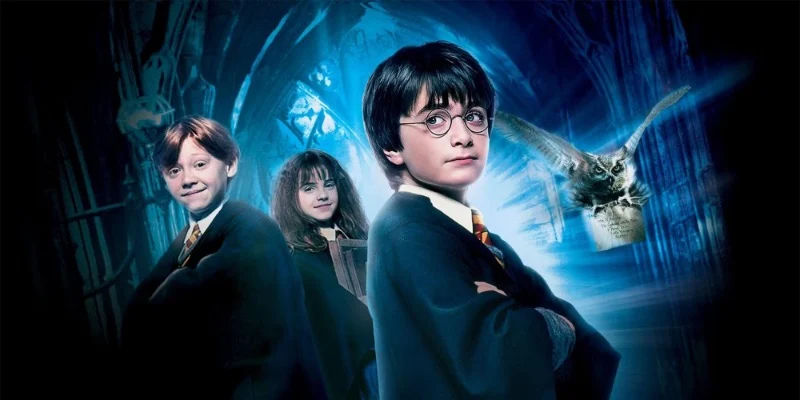
The film was released with different titles in various countries. Most countries saw it as ‘Harry Potter and the Philosopher’s Stone’, but it was called ‘Harry Potter and the Sorcerer’s Stone’ in the United States. To ensure consistency, the young actors recorded some lines of dialogue twice. This way, the dialogue would match perfectly no matter which title – Philosopher’s Stone or Sorcerer’s Stone – viewers saw.
This required meticulous checks of props and signage while decorating the set. The audio team created backup mixes, and editors maintained duplicate versions of specific scenes. This ensured the final edit could seamlessly transition to either film version, avoiding any noticeable continuity errors.
JK Rowling Pushed For A British And Irish Cast
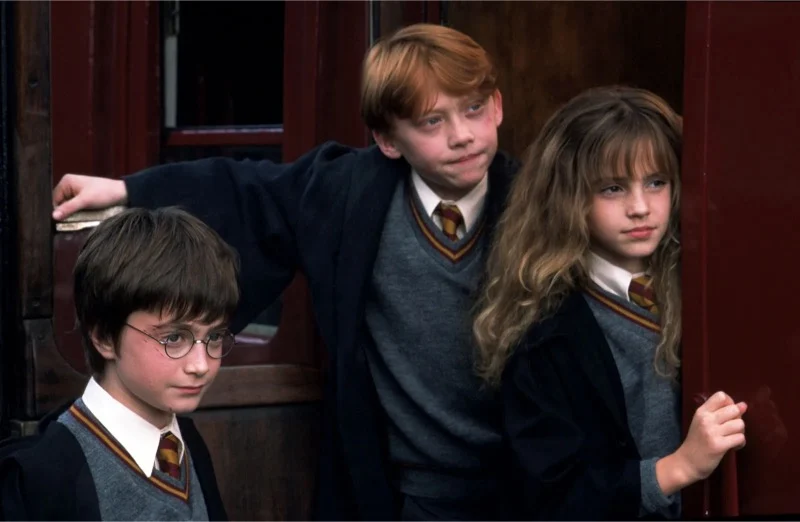
The filmmakers looked for actors from the UK and Ireland to play the leading characters, which influenced the way scenes in classrooms, common areas, and shops on Diagon Alley felt. This also led to many actors with strong backgrounds in theater being cast as professors and characters from the Ministry of Magic.
The casting team held widespread auditions to find young actors and also recruited experienced performers to play teachers and antagonists. This combination created a realistic variety of ages and speaking styles within the show, which was beneficial for maintaining a consistent setting as different directors took over and the story grew more complex.
The Great Hall’s Floating Candles Were Real At First
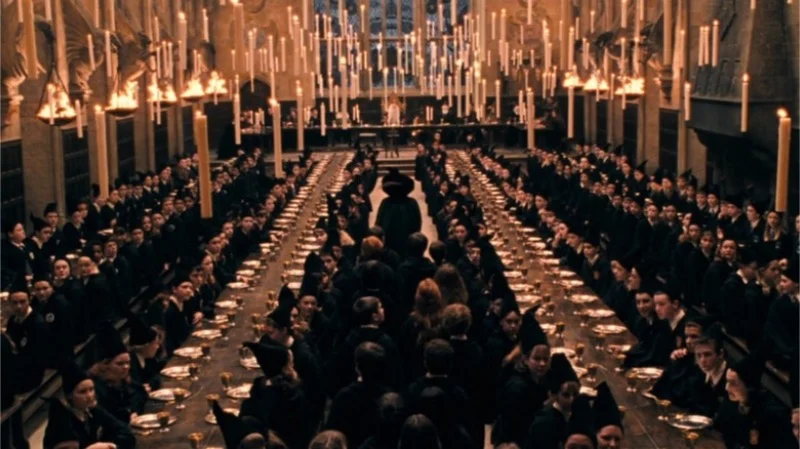
During the initial filming, the crew used around a hundred real wax candles suspended above the tables in the Great Hall using very thin, almost invisible wires. However, the heat from the candles caused some of the wires to become weak, and a few candles fell. As a result, the team decided to use a combination of carefully managed real candles and visual effects to create the desired look more safely.
The set was constructed to be life-sized, featuring long dining tables, a floor made of stone flags, and functional fireplaces. The illusion of a high ceiling was achieved through deliberate lighting choices and editing in post-production, mirroring the books’ depiction of an enchanted sky while avoiding the danger of open flames above the young actors.
The Hogwarts Letters Required A Small Paper Factory
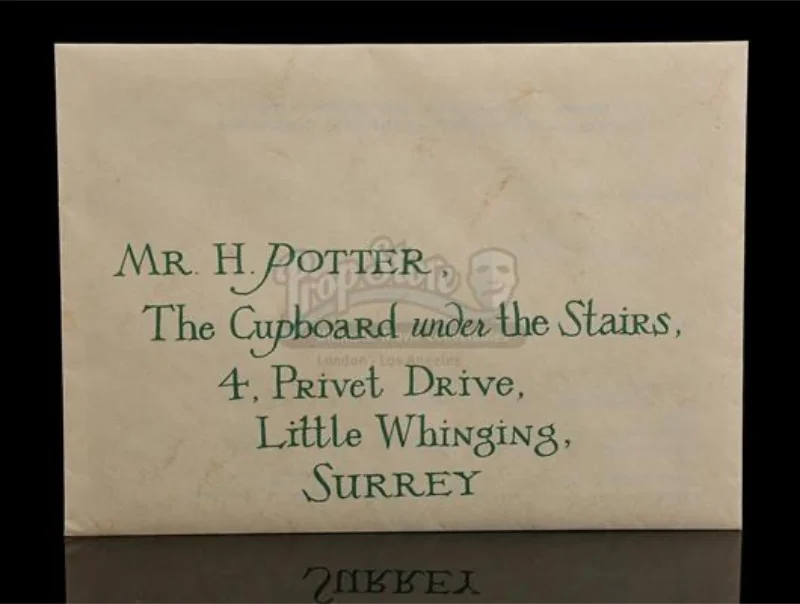
As a film enthusiast, I was fascinated to learn about the details they put into creating the magical world on screen! They didn’t just use any old envelopes for the mail. The production team actually printed thousands of them with a really striking green address and even used a wax seal. But it didn’t stop there – they then deliberately aged the envelopes to make them look like they’d been carried by owls and sorted through a busy postroom. And for those iconic scenes at the Dursley’s house, it was even more clever! Rigging teams rigged up a system where they fed letters through hidden fans and chutes, making the paper swirl around the living room in a completely natural-looking way.
To create the illusion of flying envelopes, the art team experimented with various paper thicknesses and types of seals, finding the right balance between rigidity and movement. For outdoor scenes, they used real owls, and when the owls couldn’t perform exactly as needed, puppeteers and visual effects were used to achieve the perfect timing.
The Mirror Of Erised Hides A Secret Message
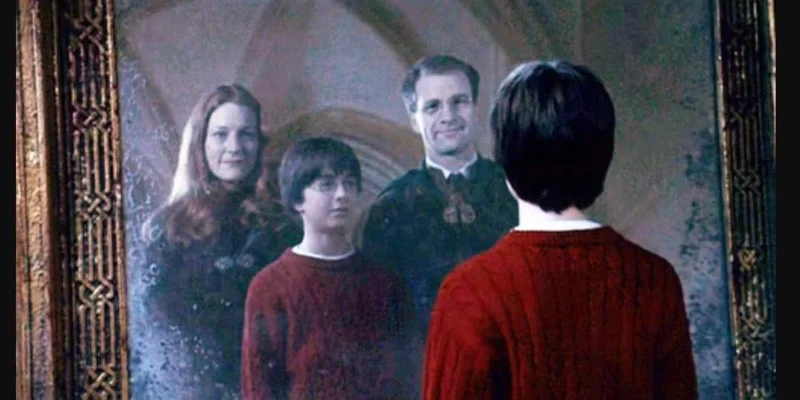
The writing around the mirror’s frame initially seems like a confusing code. However, if you read it in reverse and with different spacing, it reveals a straightforward sentence explaining how the mirror works. This clever design allowed the prop to function as a puzzle within the scene, avoiding the need for characters to explain things directly.
The mirror effect was created using multiple layers of glass and carefully positioned lights, ensuring reflections and doubles appeared precisely where the camera required. Actors stood on marked spots to maintain correct eye contact, and the cinematography focused on keeping the reflections visible yet maintaining an air of mystery.
Quidditch Was A Blend Of Harnesses, Rigs, And Animation
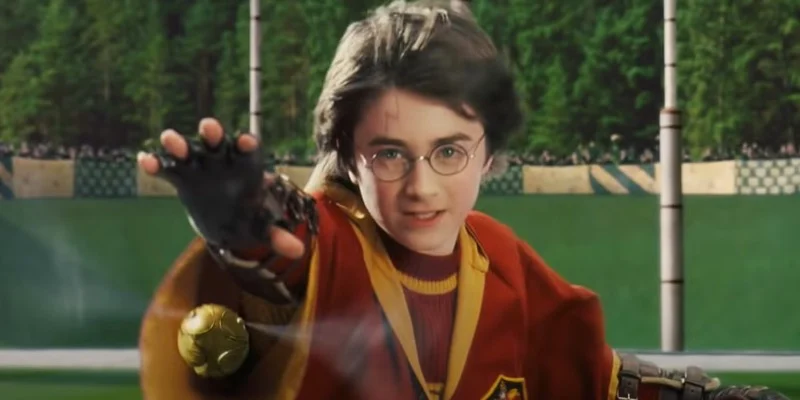
Actors were positioned on makeshift seats – broom handles attached to pivoting supports – which allowed the crew to simulate movement with fans. A blue screen formed the backdrop of the scene. Stunt coordinators carefully practiced aerial maneuvers using safety cables, and then animators digitally added elements like Quaffles, Snitches, and a cheering stadium to create the full Quidditch match experience.
Costume designers strengthened robes and sleeves to allow for flowing, dramatic movement without the fabric ripping, especially with fans and support systems in use. The prop teams created several versions of brooms – for detailed close-up shots, scenes of flying, and fast transitions – and carefully balanced each one to help performers maintain stability throughout the lengthy filming process.
The Moving Staircases Started As Miniatures
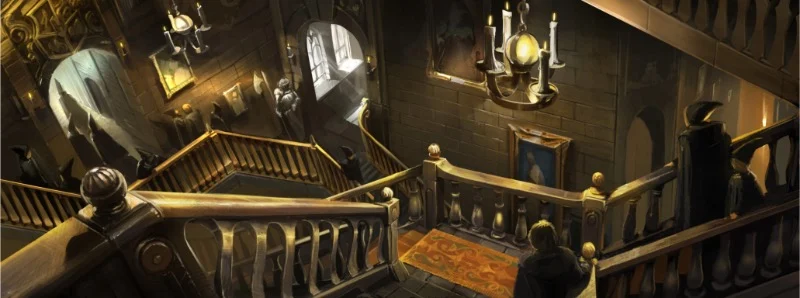
Before digital effects were used to create Hogwarts, skilled model builders constructed incredibly detailed, small-scale staircases. These staircases were designed to rotate and securely connect. They were filmed individually with precise lighting, and then combined with footage of the actors to create the illusion of a constantly changing, yet believable and tangible, castle maze.
For the full-scale sets, the stairs and landings were built to match the look and feel of the smaller model. This meant the editors could seamlessly switch from a long shot of the stairs moving to a close-up of students getting off a landing, making it easy for viewers to follow what was happening.
A Real Suburban Street Became Privet Drive
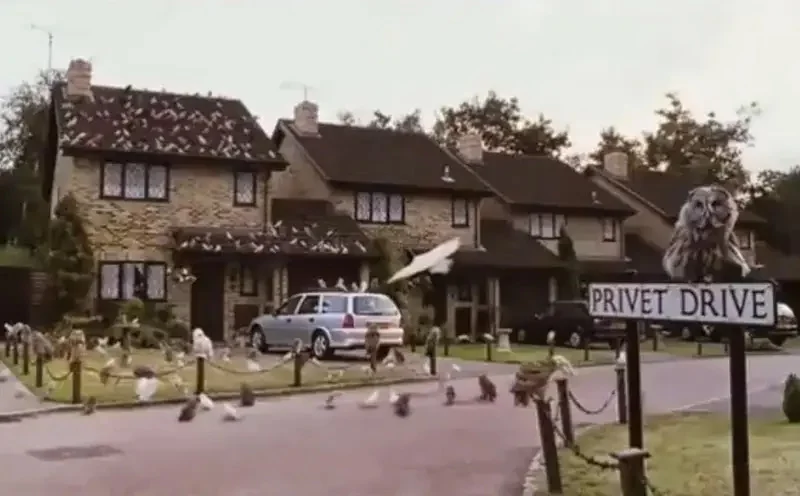
The outside of the Dursley’s house was filmed on a quiet, residential street chosen for its tidy gardens, brickwork, and consistent appearance. The film crew added specific details to the garage, front door, and windows, and they coordinated with local residents to ensure filming equipment and lights could be moved in and out with as little inconvenience as possible.
The indoor shots were filmed on sets designed to allow walls to be easily moved for camera angles and lights. The team carefully chose colors for carpets and paint to match the real locations, and then added personal touches like family pictures, fridge magnets, and organized mess to make the house feel realistic and comfortable without taking attention away from the important plot points.
The Invisibility Cloak Used Old School Camera Tricks
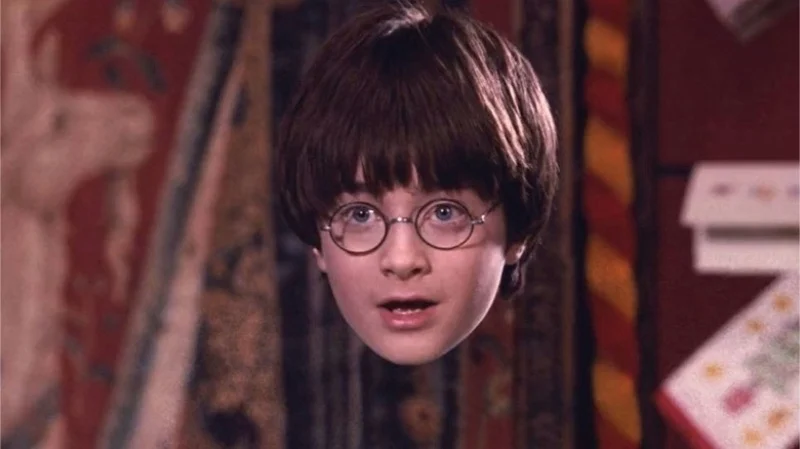
As a critic, I was really impressed with how they made Harry disappear in the film. The team cleverly shot scenes of the rooms *without* Harry first. Then, they filmed the same scenes with Daniel Radcliffe wearing a special cloak – it was lined with either blue or green. The visual effects artists, or compositors, then worked their magic, removing the color of the cloak digitally. This created the illusion that the cloak itself was actually erasing whatever was behind it – a really seamless effect, I must say!
The costume and special effects teams worked together to choose a fabric weight that would allow the cloak to hang well on the actor’s shoulders, but also be easy to work with during visual effects processing. They used floor markings to ensure the actor was in the same position for each take, and the lighting team precisely matched the shadows to maintain the illusion, especially in close-up shots.
Nicolas Flamel Comes From Real World Alchemy
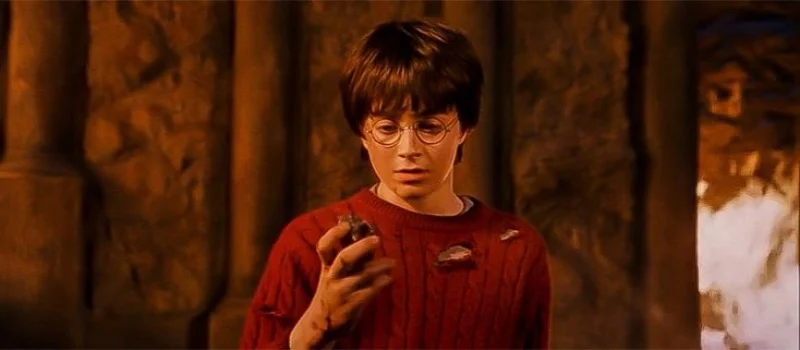
The character responsible for creating the Stone is based on a real person from European alchemy stories. In those old tales, that name represents a red stone believed to be able to turn ordinary metals into gold and extend someone’s life. That’s why the story emphasizes how important it is to keep the Stone safe.
The prop stone featured in the film was intentionally made to appear rugged and see-through, giving off a magical glow without resembling a perfectly cut gem. The art department created several versions – for actors to hold, for detailed close-ups, and for action scenes – and carefully matched their colors to ensure consistency throughout the movie.
Tell us your most beloved subtle detail from ‘Harry Potter and the Philosopher’s Stone’ in the comments below! Let’s all share our thoughts and discuss the fascinating details that make the story so magical.
Read More
- Silver Rate Forecast
- Gold Rate Forecast
- Красный Октябрь акции прогноз. Цена KROT
- Navitas: A Director’s Exit and the Market’s Musing
- Unlocking Text Data with Interpretable Embeddings
- VOOG vs. MGK: Dividend Prospects in Growth Titans’ Shadows
- XRP’s Wrapped Adventure: Solana, Ethereum, and a Dash of Drama!
- Itaú’s 3% Bitcoin Gambit: Risk or Reward?
- Investing in 2026: A Tale of Markets and Misfortune
- Ethereum’s $3K Tango: Whales, Wails, and Wallet Woes 😱💸
2025-10-05 04:16